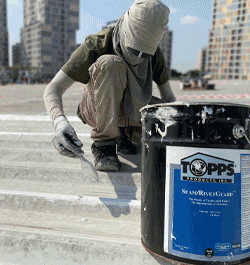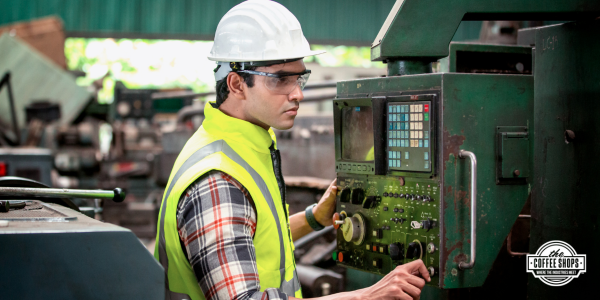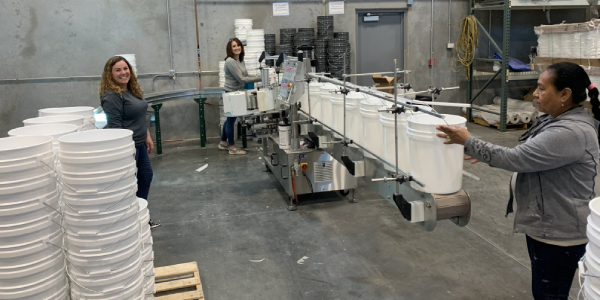UP TO THE MINUTE
Best practices for operating machinery on the job site
February 12, 2025 at 6:00 a.m.By Cotney Consulting Group.
By implementing comprehensive training, emphasizing pre-operation safety checks, maintaining proper work attire and promoting an environment of focus and vigilance, contractors can significantly reduce the risk of machine-related injuries.
Safety is paramount in the roofing industry, where heavy machinery and power tools are integral to daily operations. Improper use of machinery and lack of training are leading causes of occupational injuries in construction. By understanding machine safety and implementing strict protocols, roofing contractors can significantly reduce risks and ensure the well-being of their workers.
Why machine safety matters
Machines and power tools make roofing work more efficient but also introduce various hazards. From pinching and crushing to cutting and severe injuries, machines can pose a threat even when performing simple tasks. To keep your team safe, it is vital to emphasize training, proper use of equipment and constant vigilance. Remember, the right precautions today can prevent accidents tomorrow.
Proper training: The first line of defense
One of the most critical aspects of machine safety is ensuring that only trained and authorized personnel operate machinery. In many cases, injuries occur when operators are either untrained or careless. It is essential to establish a culture where employees understand that "hands-off" is the rule until they have received proper training and authorization.
Providing comprehensive training sessions on each machine's specific safety requirements is non-negotiable. This training should cover:
- How to operate the machine safely: Include instructions for proper startup, use and shutdown.
- Recognizing machine hazards: Operators must understand potential dangers, such as moving parts, pinch points and electrical components.
- Emergency procedures: Ensure workers know how to respond to machine malfunctions and emergencies.
Regularly revisiting safety training ensures that workers remain knowledgeable and vigilant. Updated training should be part of your ongoing safety program, especially as new equipment is introduced to the job site.
Pre-operation safety checks
Before turning on any machine, a safety check is essential. Encourage your team to develop a habit of inspecting machinery before each use. Key steps in this pre-operation check include:
- Clear the area: Ensure everyone is out of the way before starting the machine. This simple step can prevent accidents, especially in crowded or active work zones.
- Inspect guards and safety devices: Ensure all guards and safety mechanisms are in place and properly adjusted. Never bypass or disable safety features, as they are designed to protect the operator.
- Follow lockout/tagout procedures: Always adhere to established lockout/tagout (LOTO) procedures to control hazardous energy. Proper LOTO practices can prevent the accidental startup of machinery during maintenance or repair.
Operators can identify and address potential issues by taking a few extra minutes to perform these checks, reducing the likelihood of injury.
Safe machine operation: Key practices
Operating machinery safely is about more than just knowing how to turn it on and off. Here are several best practices that should be instilled in every roofing crew:
- Keep machines clean: Accumulated dirt, debris or material buildup can interfere with a machine's proper operation. Regularly clean machinery to ensure it works safely and efficiently.
- Hands-off approach: When an object gets stuck in a running machine, operators should follow established safety procedures to clear it—not use their hands. Using hands or makeshift tools to slow down moving parts is also dangerous; allow the machine to come to a complete stop on its own.
- Never leave machines unattended: If a machine is running, it should not be left unattended. Unsupervised machines pose risks, as malfunctions can happen suddenly and lead to accidents.
The importance of proper work attire
Workers' clothing can make a difference in machine safety. Loose clothing, long sleeves, jewelry or accessories can easily get caught in moving parts, leading to severe injuries. To minimize risks, ensure that all workers adhere to the following dress code:
- Short-sleeved shirts and cuffless pants minimize the risk of being snagged by machinery.
- Hair and accessories: Long hair should be securely tied back or covered, and jewelry should be avoided to prevent entanglement.
- Personal Protective Equipment (PPE): Besides proper attire, workers should use appropriate PPE, such as eye protection, gloves (where suitable) and hard hats, to protect against machine-related hazards.
Staying focused: Avoid distractions
Concentration is key when working with or around machinery. Allowing oneself to become distracted, even for a moment, can have serious consequences. Create an environment where focus is prioritized, and workers are always reminded to stay alert. Whether through regular safety meetings or daily reminders, reinforcing the importance of concentration is vital for machine safety.
Establish clear safety protocols and emergency procedures
A robust safety program incorporates written policies, checklists and emergency procedures. Developing clear guidelines on machine operation and maintenance helps workers understand their responsibilities. Additionally, encourage an open dialogue where workers can report hazards or express concerns about machinery. Here's how to implement effective machine safety protocols:
- Create checklists: Develop detailed checklists for operating each machine. Include items like pre-operation inspections, operational guidelines and shutdown procedures. These checklists help standardize safety practices across your team.
- Implement emergency procedures: Ensure employees are trained to respond correctly to machine malfunctions or accidents. Knowing when and how to shut off equipment and call for help can differentiate between minor incidents and severe injuries.
Promote a culture of machine safety
Building a culture of machine safety requires ongoing effort and commitment from everyone in the organization. Safety is not the responsibility of one person or department; it's a shared priority. Promote a culture that emphasizes:
- Vigilance: Encourage employees to stay vigilant, regularly assess their surroundings and never take shortcuts with safety procedures.
- Accountability: Ensure every team member understands their role in maintaining a safe job site.
- Continuous improvement: Safety protocols should evolve as new equipment and techniques are introduced. Hold regular safety meetings to review practices, discuss incidents and update protocols.
Machine safety is a critical component of any roofing operation. By implementing comprehensive training, emphasizing pre-operation safety checks, maintaining proper work attire and promoting an environment of focus and vigilance, contractors can significantly reduce the risk of machine-related injuries. Remember, machines, even simple ones, have inherent hazards that can't be entirely eliminated. However, following established procedures and prioritizing safety can prevent accidents and keep your team safe on the job site.
Learn more about Cotney Consulting Group in their Coffee Shop Directory or visit www.cotneyconsulting.com.

















Comments
Leave a Reply
Have an account? Login to leave a comment!
Sign In